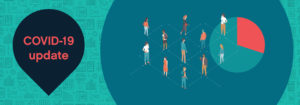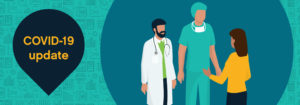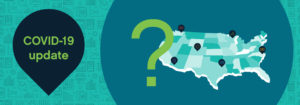Social determinants of health are grouped into five domains: economic stability, education access and quality, healthcare access and quality, neighborhood and built environment, and social and community context. These domains encompass all aspects of influence on a patient that can impact their experience of well-being and quality of life.
While some people have an advantage in most or all of these domains, there are many people who are disadvantaged by several or all aspects of their environment and identity. Social determinants of health is a reminder for providers and payers alike that patients must be considered holistically and completely to achieve better health at a lower cost.
That said, there’s only so much that information alone can do. The key is not just knowing the questions but delivering meaningful answers. In this blog post, I specifically want to demonstrate how taking action with telehealth can help healthcare organizations mitigate disadvantages in all domains of social determinants of health.
- Economic stability: Telehealth can provide significant relief in a financial sense. To start, virtual visits are priced lower than in-person visits. Even in cases when the price is the same, patients can avoid the cost of driving or commuting to the appointment, missing paid work time, and paying for childcare or other services that would allow them to attend in person.
- Education access and quality: Research shows that the level of education is directly correlated to health outcomes and income gains. It is simple to see how a disadvantage in any of these aspects will have a significant impact on others. Telehealth may help mitigate the barriers that less formally educated people typically face by providing more direct opportunities to access efficient preventative care and early intervention.
- Healthcare access and quality: Telehealth is essential to solving care access challenges as it creates more direct, convenient connections between patients and providers. This is critical for people who experience the transportation or economic challenges that we discuss in this post, but it also fills a huge gap for people whose health conditions can make in-person visits even more difficult. This includes people with mental health disorders who may be less adherent to appointments due to fear of travel, social anxiety, depressed mood, and other symptoms. Telehealth can also be very helpful for people who are disabled and encounter more difficulties in traveling, as well as those who are immunocompromised or experience debilitating physical symptoms due to various illnesses.
- Neighborhood and built environment: Decades of policies and laws have pushed marginalized groups to areas with limited resources, insufficient infrastructure, and fleeting support. Since an estimated 85% of people in America use smartphones and 92% have internet access, these barriers can be mitigated by telehealth and other health-related services (e.g., food and medication delivery, virtual exercise classes).
- Social and community context: Many people face obstacles and dangers to their health as a result of historical and ongoing systems of oppression and discrimination. These factors can affect health on a biological level and of course on a systemic level. People of minoritized communities—based on race, religion, language, or other identities—can feel significantly less safe in situations where they may experience additional criticism or discrimination based on those identities. Telehealth provides people from these communities with access to care in a way that preserves their physical and mental health.
The main takeaway I want to share with all of this is that we must get into the details to provide the best care. The more we know and the better data we have, the more we can use incredible technologies and resources like telehealth to address major predictors of health, including social determinants. When it comes to the pursuit of equitable, whole-person care, we must leave no stone unturned.
Get our take on industry trends
Avoid COVID-19 modeling pitfalls by eliminating bias, using good data
COVID-19 models are being used every day to predict the course and short- and long-term impacts of the pandemic. And we’ll be using these COVID-19 models for months to come.
Read on...Population Health Amid the Coronavirus Outbreak
In speaking with many colleagues throughout the provider and payer healthcare community, I’ve found an overwhelming sense of helplessness to the outbreak’s onslaught. This is exacerbated by the constant evolution of reported underlying medical conditions that indicate a higher risk of hospitalization or mortality for a coronavirus patient.
Read on...COVID-19 and the Financial Storm Ahead for Providers
Across the country, healthcare organizations are seeing 40%-80% declines in monthly charges with some of the most profitable services lines only seeing 20% of their normal monthly volumes during the pandemic.
Read on...3 Steps Any Healthcare Organization Can Take to Improve Enterprise Analytics
By Kristin Weir When it comes down to the most basic purpose of why organizations use analytics, it’s simple: they…
Read on...


